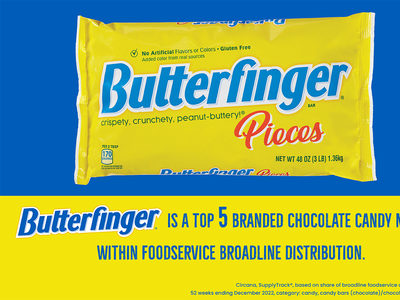While rye bread is a mainstay in countries like Germany, Poland, and Russia, it’s a different story in the United States, where wheat reigns supreme. However, bakers seeking to reconcile bread’s shaky relationship with consumers may want to give the variety a second look. From health benefits to strong flavor profiles, rye bread has many on-trend qualities consumers are searching for, says Stanley Ginsberg, proprietor and chief of The New York Bakers and author of The Rye Baker.
At this year’s IBIE, to be held September 7-11, with an education-only day on September 7, Ginsberg will discuss the opportunities and challenges rye presents to wholesale and artisan bakeries. To get a preview of what to expect at the talk, bake's sister publication Baking & Snack spoke to Ginsberg about consumer perceptions of the grain and how to work with it.
Baking & Snack: What are the main attributes of rye bread?
Stanley Ginsberg: Probably rye's most significant attribute is its many faces. Over the centuries, European bakers developed methods and techniques for extracting flavor from the grain that gives rye bread a multitude of complex flavor profiles, from sweet to sour to savory.
What are some common misconceptions about the grain?
I think the biggest misconception is that rye equals caraway. In the U.S., most "rye breads" contain very little rye and lots of caraway, which is a flavor that people either love or hate. I've met countless people who tell me that they hate rye bread when it's the caraway that turns them off.
Does rye bread play into any current trends seen in the marketplace?
Absolutely. Rye is generally higher in fiber, protein and trace minerals and lower in gluten and calories than wheat and its relatives. It's also an ancient grain: archaeologists have found evidence of rye agriculture going back at least 12,000 years.
What formulating challenges can bakers encounter when producing the bread on a large scale?
Rye's chemistry sets it apart and makes it a challenging grain to work with. Unlike wheat and its relatives, which produce gluten, rye breads get their structure from starchy gels. The challenges arise because the amylase enzymes present in whole grains — and in the malts that are usually added to patent flours — convert those starches into sugar and degrade the structure of the rye doughs. In fact, that's usually what causes gumminess in rye breads. Managing this instability is probably a rye baker's biggest challenge.
How does the production process differ from other bread varieties?
Because rye doughs are based on those starchy gels, they're not machine friendly. In other words, doughs with a significant percentage of rye — say 30% and up — require hand work. On the positive side, rye breads don't require a lot of shaping, since there are only three basic shaping methods: free-standing such as boule or batard, proofed in a basket or panned.
Overall, why does rye bread represent a significant growth opportunity for bakers?
Rye's health benefits and extraordinary range of flavor profiles and textures allow bakers to offer a variety of products that are truly unique and distinctive. On the downside, rye's caraway-based bad rap means that a lot more customer education is required than might be the case for wheat varieties.
How can bakers leverage rye bread’s benefits and educate consumers about it?
In two ways, I think. First, communicate rye's health benefits as often as possible in as many ways —conversation, handouts, signage, videos — as possible. Second, sample, sample, sample. If they don't try it, chances are they won't buy it.
The education session The Resurgence of Rye takes place Sept. 9 during IBIE. To register for this event, click here.




